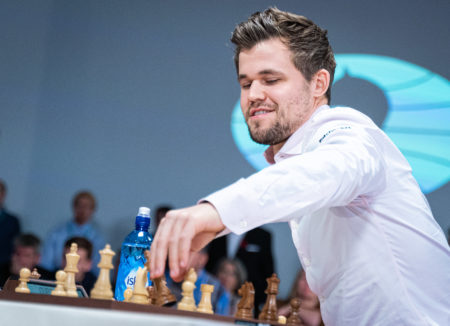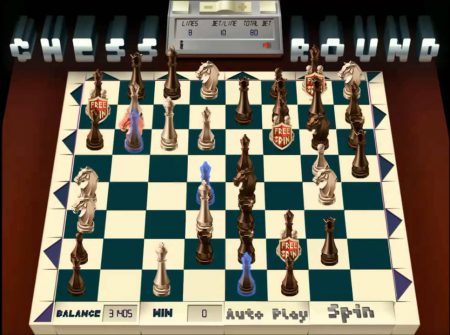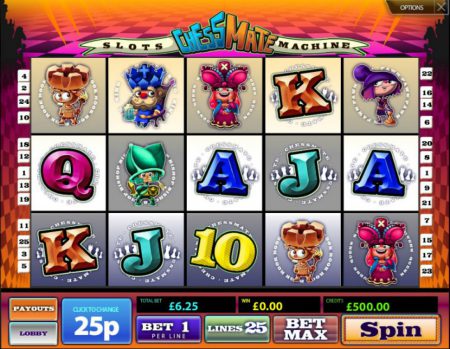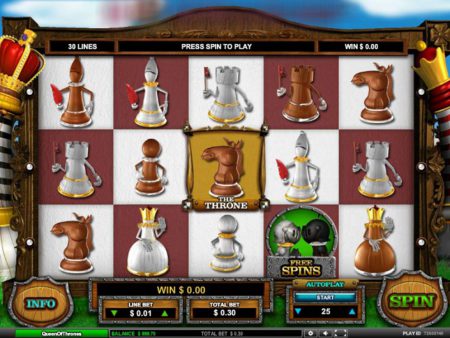The World Chess Championship
The World Chess Championship is a sports event used to determine the world champion in chess. The event first began in 1886 and took place each year until 2014 when it was given a two-year schedule. The current World Chess Champion is Magnus Carlsen of Norway who has held the title since defeating Viswanathan Anand in 2013.
Current World Chess Champion: Magnus Carlsen

Magnus Carlsen is the current World Chess Champion, having held the title since 2013. The 29-year-old from Norway is also the current World Rapid Chess Championship and Wolrd Blitz Chess Champion. Regarded as a chess prodigy, Carlsen won the Norwegian Chess Championship at the age of 15 and made the FIDE World Rankings at the age of 19, becoming the youngest chess player ever to make the list.
His success has been noted, as the talented player has won numerous awards throughout his chess career. In 2009, 2010, 2011, 2012, and 2013, Carlsen was awarded the Chess Oscar which is awarded to the best player every year. Carlsen was also the final person to be awarded a Chess Oscar as the awards ceased after 2013. In addition to the Chess Oscar, Carlsen was awarded the Norwegian Peer Gynt Prize for achieving “distinction in society” and, in 2013, was named one of the most 100 influential people in the world by Time.
Image: Carlsen at the FIDE World Fischer Random Chess Championship 2019, shot by Lennart Ootes
The 2020 World Chess Championship
The 2020 World Chess Championship will take place in the latter half of 2020. It’s unknown where the Championship will be hosted, but Sint Petersburg, Argentina, and the UAE have all expressed interest in hosting the event. Unlike the 2018 Championship, the 2020 event will be a best of 14 matches with tie breaks after all 12 regular games ended in draws in the 2018 event.
The Challenger
The challenger for the 2020 World Chess Championship will be the winner of the Candidates Tournament, an eight-player double-round tournament taking place in Russie between March 15th and April 5th, 2020. Currently, the qualifiers for the tournament are Fabiano Caruana, Teimour Radjabov, Ding Liren, Wang Hao, Alexander Grischuk, Ian Nepomniachtchi, Anish Giri, and Kirill Alekseenko. Whoever wins the Candidates Tournament will face-off against Carlsen later this year.
Expect more updates as they come.
Chess World Championship: The Rules
According to the official regulations, the world chess championship will be played over 12 games and the championship is won whenever one of the two players reaches 6.5 points. The opening ceremony, which took place on November 8, will determine which player starts with the white chess pieces through a drawing of colours. After the sixth game, the players will swap colours.
Also, if the two players have equal scores after the twelve games have been played, four rapid tie-break games will be played. It the score is still equal, the two men will play two blitz games (Five minutes plus three seconds increment). However, if the scores are still equal after this, an additional two blitz games will be played. If there’s still no clear winner, the two men will play a sudden-death match.
What Do Players Win?
Alongside the title for 2018’s world chess champion, the pair will be competing for a minimum prize fund of one million euros. However, there are two ways the prize will be awarded to the players. If the match ends with 12 regular games, the prize fund will be divided between the two players with 60% going to the winner and the remaining 40% going to the loser. If the winner is decided by tie-break games, the winner receives 55% of the prize fund and the loser 45%.
The 2018 World Chess Championship
The 2018 World Chess Championship kicked off on November 8 in London. The highly anticipated world championship marked the first time since 1990 that the award was contested by the world’s two top players. The 2018 World Chess Championship saw current world champion Magnus Carlsen defend his title against American player Fabiano Caruana across 12 matches in November 2018 at The College in Holborn, London.
Chess World Championship 2018: The Games
Game One: Caruana – Carlsen: 0.5-0.5
The first match between Caruana and Carlsen lasted seven hours and 115 moves. It ended in a draw and has become the second longest game played in a World Championship after Victor Korchnoi played against Anatoly Karpov during the fifth game of 1978’s match, lasting 124 moves.
During the last few hours of the match, Magnus Carleson almost became the first champion to win the first match as black in 37 years. However, Carleson played a series of inaccurate moves between moves 34 and 40, allowing the players to agree to a draw.
Game Two: Caruana – Carlsen: 0.5-0.5
The second match between Caruana and Carlsen ended in just 49 moves and three and a quarter hours. It saw Caruana leading the game until Carlsen managed to push back, prompting the two players to agree to a draw instead of grinding another 50 moves.
Game Three: Caruana – Carlsen: 0.5-0.5
The third match between Caruana and Carlsen lasted 49 moves across four and a quarter hours. The two players were in equal position by around move 20 though it soon got heated before ending peacefully in a draw.
Game Four: Caruana – Carlsen: 0.5-0.5
The fourth match between Caruana and Carlsen lasted 34 moves in a game that lasted just under three hours. It was one of the shortest and most straightforward match of the championship so far. The match ended peacefully in a draw that began with Carlsen performing the English Opening move, moving his first pawn to C4.
Game Five: Caruana – Carlsen: 0.5-0.5
The fifth match between Caruana and Carlsen lasted 33 moves, becoming the shortest match of this championship. Like the previous match, it was straightforward and ended quickly.
Game Six: Caruana – Carlsen: 0.5-0.5
The sixth game between the two players lasted six and a half hours. Carlsen played somewhat carelessly over the game but took refuge in a defensive structure while moving with precision towards the endgame. However, both players agreed to a draw after the 80th move.
Game Seven: Caruana – Carlsen: 0.5-0.5
The seventh game once again ended in a draw for the players. Carlsen and Caruana agreed to a draw after move 40. The first nine moves followed the second match until Carlsen deviated with his tenth move, but Caruana was ready and countered his move. After the game, Carlsen admitted to being too soft with Caruana. Could that change with game eight?
Game Eight: Caruana – Carlsen: 0.5-0.5
The eighth game in the championship once again ended in a draw between the two players. Lasted 38 moves over 3 hours and 43 minutes, the match saw Magnus fail to protect his king during midgame almost leaving Caruana a chance to win. However, Magnus managed to save the game when Caruana made an error with move 24. h3. The series is now deadlocked at 4-4.
Game Nine: Caruana – Carlsen: 0.5-0.5
The ninth game of the 2018 championship ended in another draw. It lasted three-and-a-half hours saw Carlsen start the game with the English Opening and throughout the game, Carlsen was edging closer and closer to a win. However, his luck came to an end when with move 25 where Carlsen slipped up, allowing Caruana to perform a series of moves that eventually led to their draw.
Game Ten: Caruana – Carlsen: 0.5-0.5
We’re heading towards endgame now, and the tenth match between the two professional players ended in another draw after 54 moves and five hours and 19 minutes. The game opened with Caruana playing the Sicilian as was done in game eight. Throughout the game, Magnus attempted to find ways to corner Caruana but was unsuccessful as Caruana moved quickly across the board. Eventually, the pair agreed to a draw.
Game Eleven: Caruana – Carlsen: 0.5-0.5
The eleventh match, of twelve, in the World Chess Championship once again came to a draw. Both players were left disappointed with the outcome of the match, which saw Carlsen start with the Petroff. By the 13th and 14 moves, both Queens were off the table. The rest of the game saw Caruana attempt to convert his pawn while Carlsen fended him off. The pair eventually agreed to a draw and have already made plans for the final match of the championship.
Game Twelve: Caruana – Carlsen: 0.5-0.5
The final game between Caruana and Carlsen ended in another draw. The match, which ran for 31 moves across 3 hours, began with Caruana playing the Sveshnikov variation, the same as their eighth game. Throughout the match, Caruana attempted to outsmart Carlsen by planning his moves with precision. However, Carlsen continued to surprise him by responding back within minutes. Ultimately, the pair agreed to a draw which means the winner will be declared on Wednesday’s (November 28) rapid play-off.
Rapid Play-Off
The rapid play-off will see Caruana and Carlsen play four rapid games with 25 minutes for each player and an increment of 10 seconds per move. Carlsen will play as white in the first game but if they’re still tied, they will play up to five mini-matches of two blitz-games (Five minutes for each player with a three-second increment). However, if those five mini-matches are drawn, they will play one sudden-death match.
The Tie-Breakers: Caruana – Carlsen: 0 – 3
The first two games of the tie-breakers saw the players go head-to-head under tight time restrictions. Carlsen kicked off the first match as white with the English opening, the third time it was used in 19 days. Caruana quickly landed himself in trouble, resulting in him losing out on the first match. Caruana launched the second tie-break game with the Open Sicilian, the same as game 12. After a total of 28 moves, however, Carlsen once again came out on top.
The third game kicked off with Carlsen opening as white. Caruana played the Sicilian Defence for the first time during this championship. However, the American chess player slipped with move 43, providing Carlsen with an advantage. After 51 moves, Magnus came out on top and won the championship for his fifth year in a row. Magnus now walks home with the €1M (£880,000) prize and retains his Chess World Championship title.
The Players
Magnus Carlsen
Magnus Carlsen, from Norway, is the current world champion. The 27-year-old has held the title for five years after he defeated world champion Viswanathan Anand from India. Carlsen is known as one of the world’s best chess players. He became a chess grandmaster at the age of 13 and has won numerous tournaments throughout his life.
Fabiano Caruana
Fabiano Caruana was given the right to challenge Carlsen after winning the FIDE Candidates’ Tournament in Berlin this year. The 26-year-old earned the chess grandmaster title at the age of 14. Caruana was born in Miami and grew up in Brooklyn before he moved to Italy in 2005 where he represented the country in world championships. He returned to the US in 2015 and now lives in St. Louis, Missouri, where he won the 2014 Sinquefield Cup.
Chess Rules: How to Play
Many people believe that learning chess rules is tricky but it isn’t. You can follow our handy guide below to quickly learn the rules and gameplay.
Setting up the Chessboard
Before starting a game of chess you must set up the game board. First, place the board down on a table so each player has a white square at the bottom right side of their board. When this is done, you simply have to arrange the chess pieces as follows:
- The pawns fill up your entire second row
- The rooks (Sometimes known as the tower) is placed in the corners of your board
- Place the knights beside the rooks
- The bishops sit beside the knights
- The queen and king always sit in the middle of the board, with the queen on her matching colour (White queen piece on a white square, black on black)
Ranks and Files
Players often used the ranks and files system to discuss previous moves. The files are basically the columns going up or down the board and consist of letters ‘A’ through to ‘H’. The ranks are the rows from the player’s perspective and are numbered 1 to 8. The player with white pieces starts on ranks 1 and 2 while players with black pieces start on ranks 7 and 8.
When referring to the ranks and files system, you mention your chess piece followed by the rank and file and then rank. For example, “Knight to A4” means you’ve moved your knight to column A, rank 4.
Moving in Chess
This is where people begin to slip up. Each chess piece moves and takes enemy pieces differently and it’s important you learn this quickly. In general, chess pieces cannot move through each other or more onto a square with one of their own pieces, they can only take an enemy piece.
The Pawn: Pawns can only move forward one square at a time, except on their first move in which they can move forward two squares. However, pawns can only capture enemy pieces one place diagonally in front of them. They can NEVER capture pieces directly in front of them.
The Rook: Rooks can move forwards, backwards to each side as much as it wants unless a piece of the same colour is blocking its way. Rooks can only capture enemy pieces going in the same direction but NEVER diagonally.
The Knights: Knights are the most unusual chess piece to play with as they jump over other pieces in the board in ‘L’ shapes, this means they cannot be blocked. Knights can either move one space forward and two space left or right, or move two spaces forward and one space left or right. Knights capture pieces by landing on them through their ‘L’ movements.
The Bishops: Bishops are like rooks, being able to move as much as they want but only diagonally. Bishops capture enemy pieces by landing on an opponent’s square during their path. Also, each bishop starts on one colour and remains on it for the duration of the game. This means you’ll have a white-square bishop and a black-squared bishop.
The Queen: The queen can move any number of squares in any direction possible as possible as long as she isn’t blocked by her own coloured pieces. Capturing an enemy piece with the queens works the same as the bishop or rook, capturing it by moving onto their square.
The King: The most important but weakest piece in the game. The king can move one space in any direction but can NEVER move into a space in which he can be trapped and attacked by an enemy piece, known as a check. Also, the king cannot be used to capture enemy pieces.
How to Win Chess
The aim of chess is to “checkmate” your opponent’s king. This is done by trapping it into a position where they will be captured by either having no space to move or no piece protecting him.
According to chess rules, players must move a piece into a position where they can capture the king, known as “check”, to get a checkmate. When this happens, you’re required to say “Check” so your opponent can do something to protect their king. This can include:
- Moving the king to a vacant square away from your pieces
- Blocking your piece by one of theirs
- Capturing the piece you used to “check” their king
A secondary goal to the game can be to capture as many of the opponent’s pieces as possible without losing your own or exposing your king.
Playing the Game
After setting up the board and its pieces, it’s time to play chess. The player with the white pieces kicks off the game by moving either a pawn or a knight. The player with the black pieces moves next and both players take turns moving pieces.
During the game, you can NEVER skip a turn, even if every move ends in your piece being captured. As per chess rules, you are required to move.
The game continues until a king is “checkmated” or a draw occurs. This can be done in one of five ways:
- Stalemate: The player who needs to move is not in check but has no way to move without a “check”. This can happen when the king is the only piece left and cannot move without putting himself in “check”.
- Insufficient material: This happens when there aren’t enough pieces left on the board to form a checkmate on either side.
- Threefold repetition: The position of all pieces on the board has occurred three different times. For example, players do nothing but only moving their pieces back and forth.
- Fifty-move rule: This happens when at least fifty moves for each player has played but no piece has been captured or no pawn has moved.
- Agreement: When both players agree to a draw.
Special Moves
Special rules generally aren’t a core part of chess rules, but many players incorporate these special rules in order to make the game more fun. If you’re a beginner, we suggest you wait before attempting to do any of these.
En Passant
En Passant, French for “in the pawn’s”, is a capture of a pawn with another pawn. You can only do this after your opponent has moved a pawn two squares forward from its starting position, landing directly next to one of your pawns on the same rank.
Immediately after the opponent’s two-square move, you can then move diagonally to rank six in the square directly behind the opponent’s pawn, capturing it. This is the only chance you can make this move as it cannot be replicated later on in the game.
Promoting Pawns
If a pawn reaches the far side of the board, they are promoted to another piece except for the king. The piece to which the pawn is promoted to doesn’t need to be a previously captured piece, as many players promote their pawns to queens. Promoting pawns can lead to players having multiple queens, rooks, knights or other pieces which can help during the game.
Castling
Castling is a special move that can be used to protect your king. To do this, you must move your king two squares towards either rook and then move that rook to the square immediately on the other side of the king. Considered as one move, this can only be done when:
- There are no pieces between the king and the rook
- The king is not in check and does not have to pass through or pass onto a square where he would be in check
- Neither the king or rook has made any previous moves in the game
Chess Slots
Even though we’ve explained the rules for chess, we understand that it can still be somewhat overwhelming and complicated for new players. So, for anyone still struggling with the rules or for anyone who doesn’t want to learn the rules, you can always play some chess-inspired slots to fix that itch. Surprisingly, there are several popular chess slot games available including:
Chess Round

A video slot developed by BetConstruct, Chess Round has eight reels and eight paylines. It’s based on chess and the reel represents a chess board game. What makes this slot unique is the way its slots, represented by actual chess pieces, jump around as if a game of chess is being played. To land a winning combination, pieces should be of the same colour and must appear on adjacent rows moving left to right.
In addition, the symbols in the game can only fall in positions their real-life chess pieces could move to. The game’s wild symbol can substitute for all other symbols except the free spin symbols. Landing five, six, seven or eight free spins symbols will award you 5, 10, 15 or 20 extra spins.
Chessmate

Chessmate is a slot developed by Multislot that has five reels and 25 paylines. The game’s symbols are modelled after chess pieces but are designed in quirky and unique animations.
The wild symbol, represented by a chessboard, substitutes all other symbols except the bonus round and scatter symbols. Landing three or more scatter symbols, which are represented by horses, triggers the bonus spins feature in which you are awarded three to nine extra spins.
Landing three bonus round symbols takes you to a new screen containing 10 squares. You are asked to select three to reveal cash prizes and will be awarded the highest cash prize from the three chosen.
Queen of Thrones

Queen of Thrones is a slot developed by Leander Games. It features five reels, 30 paylines and has an RTP of 96.67%. The game’s symbols are chess pieces and to form a winning combination, the chess pieces should all be of the same colour. The wild is represented by three chess pieces grouped together and can substitute for all symbols except the bonus symbol.
Queen of Thrones features a Throne Feature in which the queen can capture any of the enemy’s adjacent pieces and turn them into wild symbols. Meanwhile, landing three, four or five free spins symbols, represented by the white and black knights clashing, awards you 10, 15 or 30 bonus spins. Also, when one of your chess piece symbols excluding the king appears in the middle position on reel three, it captures any of the enemy’s pieces that your piece is able to reach via real chess moves. These captured pieces then turn into wild symbols.
Landing three bonus symbols on the first, third and fifth reels triggers the Big Capture Bonus feature. Here, you’re presented with 25 squares and are required to select five. Choosing five black pieces will award you a multiplier prize.
Questions & Answers (FAQ)
Who won the 2018 World Chess Championship?
The 2018 World Chess Championship saw Fabiano Caruana battle it out against Magnus Carlsen. The event ended with Carlsen taking home the title for the fourth time in a row, making him the current World Chess Champion.
Do World Chess Champions win any prize money?
Yep! As we explain in our detailed guide for the World Chess Championship, both players will take home some prize money. The funds are usually divided amongst the two players, with the winner always receiving more than the loser. The 2018 Championship had a prize fund of one million euros but it’s currently unknown whether that will increase for the upcoming event.
Is there a World Chess Championship live stream?
Yep! The entire event can be live-streamed for fans of the sport to watch. What’s more, anyone who wants to get a closer look at the game can purchase tickets to the event!